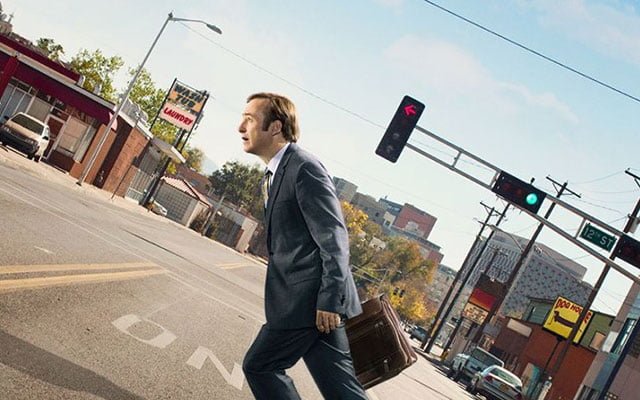Review: Better Call Saul season two – ‘slow-burning television at its best’
May 1, 2016

This prequel explores the life of Jimmy McGill (Bob Odenkirk), aka Saul Goodman, as he faces high personal stakes long before the events of its parent show Breaking Bad.
The big question for Better Call Saul was could it live up to its predecessor? Breaking Bad became a cultural phenomenon, widely hailed as one of the best shows of all time thanks to its masterful acting, writing, and direction. The comedic supporting character of Saul was not the most obvious to set up a prequel for but it works better than anyone could have imagined.
Better Call Saul focuses on the life of Jimmy, who has not yet become Saul. Audience expectation is immediately subverted – we think we know who the character will be but we don’t. There are still elements of the wise-cracking Saul in Jimmy but he is an altogether more tragic, serious figure. What Vince Gilligan and Peter Gould (creators) do is take us on a small-scale human journey that we become invested in because we know what happens in Breaking Bad and want to know how Jimmy gets there. In fact, Better Call Saul’s first season starts with a flash-forward to post-Breaking Bad. We are getting a long exploration of a beginning, middle and end to a character’s arc.
A lot of shows on television are fast-paced but Gilligan and Gould take the time to slowly explore the complexities of the characters they’ve created. In season one, Odenkirk excels at playing a practically different character, as Jimmy tries to shed his con-artist ways to become a successful lawyer and gain the approval of his older brother Chuck (Michael McKean). Slowly, however, we learn just how much Chuck resents his brother. This allows Jimmy’s character to shift focus in season two. Without Chuck he’s increasingly dissatisfied with his life and so we see a breakdown of Jimmy’s character as he begins to morph into Saul. Odenkirk and McKean do an excellent job in portraying the heart-breaking tragic complexities of the brothers’ relationship as they keep on destroying each other.
The show also focuses on fellow Breaking Bad character Mike Ehrmantraut (Jonathan Banks), who provides more of an explicit link to that world due to his dealings with the Salamancas. His story, however, also has personal stakes as everything he does is to provide for his granddaughter and daughter-in-law. Kim Wexler (Rhea Seehorn) is also a fascinating character as she contrasts with Jimmy: she’s resilient and sticks to the right side of the law whereas he doesn’t. This dichotomy becomes tragic when they embark on a relationship which the audience knows is doomed to fail.
The cinematography in Better Call Saul is like nothing else on television. The show always tries to find the most unusual shots. Take, for example, the opening of ‘Fifi’ – a five-minute single take in the desert that’s remarkable in its span and fluidity and accompanied by a throbbing score. Another example is the upside down gurney shot of Chuck in ‘Klick’, as he becomes anxious in hospital due to his Electromagnetic Hypersensitivity – it lets the audience sympathise with Chuck in a new-found way. A lot is also said without words, such as the running problem of Jimmy being unable to fit his coffee cup into his company car’s cup holder.
Better Call Saul is slow-burning television at its best as it flourishes as its own show, one in which the personal tragedies and flaws of its characters make for riveting viewing.
Better Call Saul is available on Netflix.
@Seen_Been
Filed under: Film, TV & Tech
Tagged with: Bob Odenkirk, Breaking Bad, Jimmy McGill, Peter Gould, Vince Gilligan
Comments